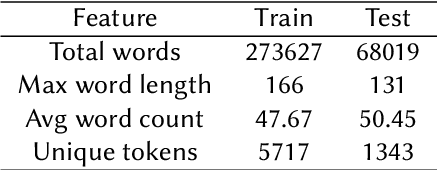Contextual Hate Speech Detection in Code Mixed Text using Transformer Based Approaches
Paper and Code
Nov 01, 2021



In the recent past, social media platforms have helped people in connecting and communicating to a wider audience. But this has also led to a drastic increase in cyberbullying. It is essential to detect and curb hate speech to keep the sanity of social media platforms. Also, code mixed text containing more than one language is frequently used on these platforms. We, therefore, propose automated techniques for hate speech detection in code mixed text from scraped Twitter. We specifically focus on code mixed English-Hindi text and transformer-based approaches. While regular approaches analyze the text independently, we also make use of content text in the form of parent tweets. We try to evaluate the performances of multilingual BERT and Indic-BERT in single-encoder and dual-encoder settings. The first approach is to concatenate the target text and context text using a separator token and get a single representation from the BERT model. The second approach encodes the two texts independently using a dual BERT encoder and the corresponding representations are averaged. We show that the dual-encoder approach using independent representations yields better performance. We also employ simple ensemble methods to further improve the performance. Using these methods we report the best F1 score of 73.07% on the HASOC 2021 ICHCL code mixed data set.
 Add to Chrome
Add to Chrome Add to Firefox
Add to Firefox Add to Edge
Add to Edge